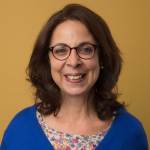
In the foundation’s Middle East and North Africa office, our work on the issue of forced migration has been aimed at protecting and advancing the fundamental rights of Syrian refugees. Grounded in the belief that their displacement should not deprive them of their rights to education, adequate housing, and decent work, we have gone beyond these essentials, insisting that cultural and artistic rights are equally significant and need to be addressed at the same time. In their displacement, these refugees—who come from one of the most culturally rich and diverse countries in our region—need tools to express themselves, understand and talk about their pasts, and narrate their stories, as well as to cultivate their artistic talents.
Our grantees undertook research studies to map refugees’ educational and learning needs, a necessary step before any interventions. They provided insight into experiences of vulnerability and informality under displacement. Grantees developed adaptive models that addressed educational needs, in refugee camps as well as urban settings. Their efforts expanded opportunities for the refugees to explore new educational pathways, while showing how they can be integrated with local communities. We encourage other partners and donors to expand and sustain what our grantees have already started.
Where do humanitarian efforts end, and developmental work begin?
If there is a line between relief and developmental work, it is a very fine one. Humanitarian aid is generally defined as the material and logistical support organizations provide to alleviate their immediate suffering; in that sense, it was often applicable to food and shelter as well as immediate and basic health services. There is a sense that development assistance starts after humanitarian work ends, but this work showed us that this is often not the case. For example, when Lebanon’s Al Biqaa Valley (where Syrians live in large numbers) was severely flooded by rain this winter, our grantees working on education stepped in with emergency relief to help Syrian families survive the deluge.
At the same time, we conceptualized and articulated our work in terms of rights: the right to education, housing, expression, work, and refugees’ right to build their human capital. Grantees offered non-traditional educational opportunities to young Syrians, to equip them with the knowledge and skills they needed to serve their displaced communities in the short and medium terms—and to rebuild their country in the long-run.
Accessing higher education
At the onset of the Syrian crisis, international organizations and the governments of receiving countries responded swiftly to the need to put younger children in school. But less attention was paid to the needs of older youth. Eventually, international organizations started to ring the alarm bell: There were enough Syrian youth unable to access education, work, or training that we find ourselves facing a “lost generation.” At the time, the main response was to provide scholarship programs, so that young Syrians to study in countries in the Arab region.
To help Syrian youth in Egypt, we made a grant that enabled 12 students (both male and female) to study in Egyptian public universities for four years, in disciplines of their choice. Egypt has been one of the few receiving countries to open its public universities to Syrian students, and in terms of financial obligations, it treated them equally to their Egyptian counterparts. That was not the situation in Jordan and Lebanon, where private education was the path available to Syrian refugees. That option come with a huge financial burden, and scholarship programs sometimes put restrictions on disciplines students could choose to study. And there were other barriers: These programs often required documents and transcripts the displaced refugees could not access. And in Jordan and Lebanon, the languages of instruction (English and French) were ones most Syrian students had not mastered, since Arabic is the language of instruction in their home country.
As the crisis in Syria continued to escalate and the conflict was further prolonged, conventional and ways of offering higher education to refugees proved untenable. Young Syrians had experienced interruptions or long pauses in their education, and missed out on entire academic years. Often, even if they enrolled in educational institutions in their new homes, students dropped out so they could work to support their families. Increasingly, scholarships went to the more privileged Syrians, who did not have to contend with these problems, and eventually demand for scholarships dwindled.
Promoting blended learning
More and more organizations have found online and blended learning to be the solution to refugees’ educational needs. One of our grantees developed and offered a series of courses in local administration and the rule of law, accredited by a European university. Another designed a program that shows what an essential liberal arts education could look like, combining engineering, history, resilience, and the arts. Yet another worked with a Jordanian university to develop a full-fledged blended program in computer sciences that could allow students to transfer to that institution after completion. There have been challenges in implementing these modules, like the poor internet connectivity in refugee camps, and the need to bring university leaders fully on board with grantees’ ideas about integrating refugees. But these hiccups have also helped build new partnerships between our grantees and organizations that want to offer assistance—by, for example, providing English language courses to improve students’ chances of enrollment, and offering library and internet resources to students in urban neighborhoods.
The conundrum of secondary education
Young Syrians between the ages of 14 – 18 were noticeably absent from the educational sphere, giving rise to what came to be known as the “pipeline” problem of students dropping out of secondary education, the natural route to university. Because of the prevalence of early marriage among rural populations in Syria (who arrived in Lebanon and Jordan in large numbers over the past seven years), girls were particularly at risk for dropping out. And amid fear for girls’ safety in camps and some urban neighborhoods, some displaced Syrian families saw early marriage as a favorable option for their daughters.
The Ford Foundation was among the first organizations to draw attention to this conundrum of secondary education and the gap in funding it. We aimed to support organizations that were already active in this area, or ready to expand their scope to address it. We insisted that displacement and financial need should not deprive young people of education, nor compromise their aspirations or the quality of the opportunities available to them. The consensus held that Syrian refugees should focus on the technical/vocational educational route, which would help them find work in the informal labor market. But our grantees did not rule out connecting refugees with academic opportunities that could lead to university and higher education.
Our grantees also paid special attention to gender bias in education, and sought to encourage more girls to study science, technology, engineering, and math (STEM). They are also working to build skills among instructors, and help young people who have been out of school for a long time catch up on learning and skills.
A holistic approach
We selected grantees based on their expertise, and proximity to the field. Several of the organizations we support have offices or extensions in or near refugee camps, and also run programs focused on health, employment, and housing needs, enabling them to take a holistic approach. For example, to enable a girl to attend school, an organization must also understand and address her family’s economic circumstances, so that her parents don’t believe marrying her off before 18 is a solution to their hardship. Economic empowerment programs enable mothers to have a say in keeping their daughters in school. And educational programs took into account children’s psychosocial state and experience of trauma.
In all of this work, it was essential for both grant makers and grantees to be willing to question assumptions and make adjustments in real-time. It is only by proceeding with that kind of openness and flexibility that we will be able to make an impact on such a fluid, urgent area.
